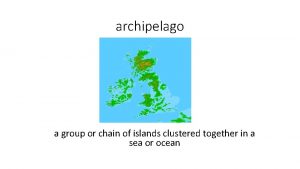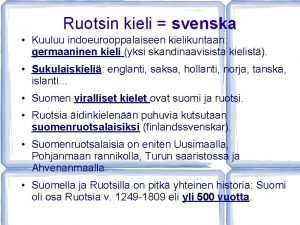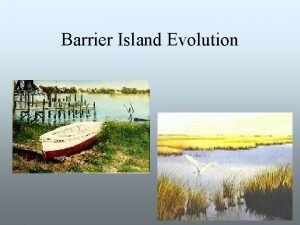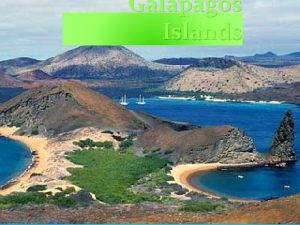High Polyploids on Islands High Polyploids in Lovis







- Slides: 7

High Polyploids on Islands High Polyploids in Lovis, 1977 in the small fern flora (only c. 50 species) of Madeira, the three genera Polystichum, 1950; Manton and Adiantum and Asplenium each contain one high polyploid, namely P. falcinellum, A. renifome and A. aethiopicum, one octoploid, decaploid and 12 -ploid levels respectively (Manton, Vida, 1968). …recent studies on the flora of Madeira (I. Manton, J. D. Lovis and G. Vida, unpublished) have established the existence of a new incipient hexaploid species in the Asplenium trichomanes complex … in the island. The circumstances of their discovery leave no room for doubt that both of these new polyploids have originated in Madeira. In Ceterach [ now included in Asplenium] the existence has been detected of a hexaploid form in Madeira (I. Manton et al. , unpublished) and of both tetraploid and octoploid forms in the Canaries (T. Reichstein and G. Vida, unpublished). None of these three forms is known outside Macaronesia.

High Polyploids on Islands A summary of Lovis’s high polyploids from islands, slightly expanded Madeira Polystichum 8 x Asplenium 6 x, 12 x Ceterach 6 x Adiantum 10 x Canaries Hawaii 8 x 8 x

High Polyploids on Islands Ideas from Lovis, 1977: …these very high Madeiran polyploids are “undoubtedly ancient and isolated types totally devoid of local relatives and. . . must therefore be ancient species with a long past history” (Manton, 1950, p. 283). Although this complex undoubtedly requires further study, the most likely interpretation of this situation is that these three taxa [on the Canaries] constitute elements persisting as relicts of a complex which evolved within Macaronesia. Manton clearly regarded these unexpected discoveries in Madeira as highly significant, and continues thus: “My personal conclusion from this is that polyploidy as such is not in itself either ancient or modern or an adaptation to cold or any other single ecological factor but that it is correlated rather with climatic or geographical upheavals however caused” (Manton, 1950, p. 283). These recent studies in Madeira have thus produced good evidence indicating that oceanic islands may not only provide a refugium for polyploid (and diploid) forms which are no longer capable of survival elsewhere but also an environment suitable for the creation of new polyploid taxa.

Adiantum viridimontanum …the larger spore volume of A. aleuticum on eastern serpentine substrate, a series of Darwinian islands, is larger than its matrix-forest ally A. pedatum. (Morgan’s data, Barrington et al. 2020 Polystichum scopulinum lemmonii True of the serpentine progenitor of Polystichum scopulinum as well 2 x LL SERPENTINE scopulinum 4 x IILL 2 x imbricans II

Propagule Size on Islands

Herb Wagner’s contribution to Carlquist: spore size and habitat reversed

High Polyploids on Islands High polyploids, increasingly more precinctive with the larger spores characteristic of higher ploidy levels, are more likely to persist on islands. (Barrington, 2020)













